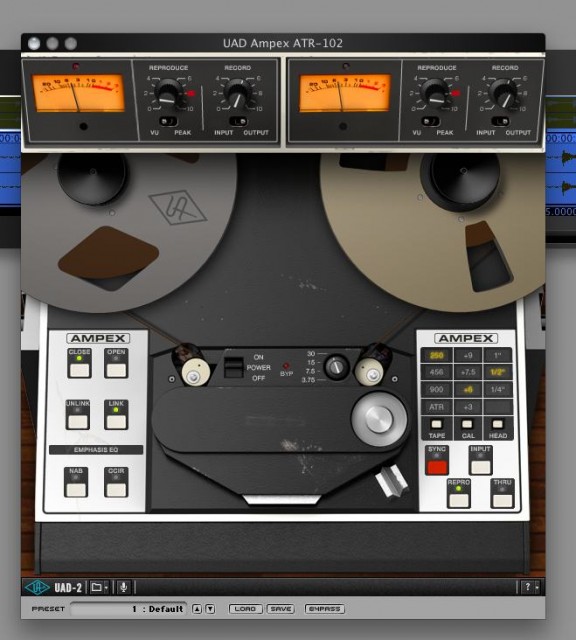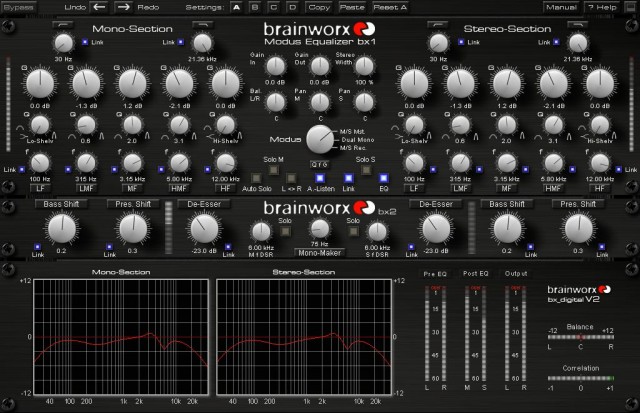
Universal Audio has a big set of updates to their DSP software out today. It seems worth sharing in part because I find the (faked) look of that Ampex reel-to-reel does give me a warm and fuzzy feeling, even if it mainly makes me want to get in a studio and hear the whir of the actual gear.
Here’s what’s in the update:
For Pro Tools users, there’s vastly-expanded support, including native RTAS plug-ins (instead of the VST-to-RTAS adapter), control surface support, proper automatable parameters, and correct naming and sorting, plus a quicker installation and workflow. I’m embarrassed to say, not having tried UA’s stuff in Pro Tools, I was unaware they’re missing – that sounds like the set of functionality that would make mixing UA and Pro Tools genuinely workable.
Full Mac OS X Lion compatibility is a big deal. We’ve seen a lot of Lion support arriving lately, and I saw readers specifically complain about the lack of support in the update. Seeing a hardware DSP platform with support seems to me a good sign, because it means both plug-in and I/O compatibility have to be in place. It’s getting to be about time to do a new compatibility update, and it may be an OS update that’s possible to recommend shortly (though Snow Leopard is working just fine for now).
Then, there are the plug-ins:

Brainworx bx_digital V2 EQ: This popular mastering EQ now comes to the UA platform, with M/S mastering, M/S recording, and L/R stereo modes. It’s kind of an EQ-plus, with M/S de-esser built in and mastering-specific EQ options, plus a mono plug for mixing.

SPL Vitalizer MK2-T is back in the emulation territory, modeled on the tube-based gear. Separate bass and mid-high modes give you frequency-specific loudness controls.
Ampex ATR-102 models the legendary two-channel tape, and has Ampex’s seal of approval. That means UA now models the two studio workhorses, the Studer A800 (see our previous coverage and shameless gear pr0n gallery) and the Ampex. ATR users and engineering titans Chuck Ainlay, Richard Dodd, Buddy Miller, and Mike Poole contributed presets, in a nice touch. US$349 buys you the plug … and yeah, that’s likely to make a few studios nervous on their rental fees. Then again, look at the names on the presets, and remember just how valuable engineers are, whether they’re behind an analog deck or a computer with a UA plug. (Take it from me – someone who’s not really an engineer.)
The SPL and Brainworx plugs were each developed outside UA. My guess is that Pro Tools support is a factor in seeing more third-party development. And while readers correctly noted the demise of other DSP platforms, UA’s is looking very healthy from a business perspective.
The only bad news: I’m confirming this, but there appears not to be support for 64-bit operation on Windows, which remains a significant omission in UA’s software.
Now, we need some double-blind A/B tests with both the Studer and Ampex (and maybe the real gear). Wonder if someone could help us set that up.
I really enjoyed some of the skepticism in comments on the last article. I think the questions “do I really need this?” and “will this give me the most value over time?” and “what alternatives should I consider?” are absolutely the questions you should ask about any music tech products. This is a news item, so I’m not anywhere near knowledgeable enough to comment in this case. I think the best thing to do is, beyond just reviews, continue to talk to producers and engineers about how they use software, and to developers about how it’s made. If you have specific questions, let us know.
And let’s have another look at the original. Simon Campbell on Flickr has this shot of one with the spools spinning:
We mastered onto this rascal at 30 ips using Dolby SR. Nice.
Recording the album ThirtySix at Gracieland Studios [UK], Rochdale
Photo is (CC-BY-ND) Simon Campbell, whose music you can go hear (linked via his name).
Universal Audio Downloads for the latest updates | Universal Audio Site
